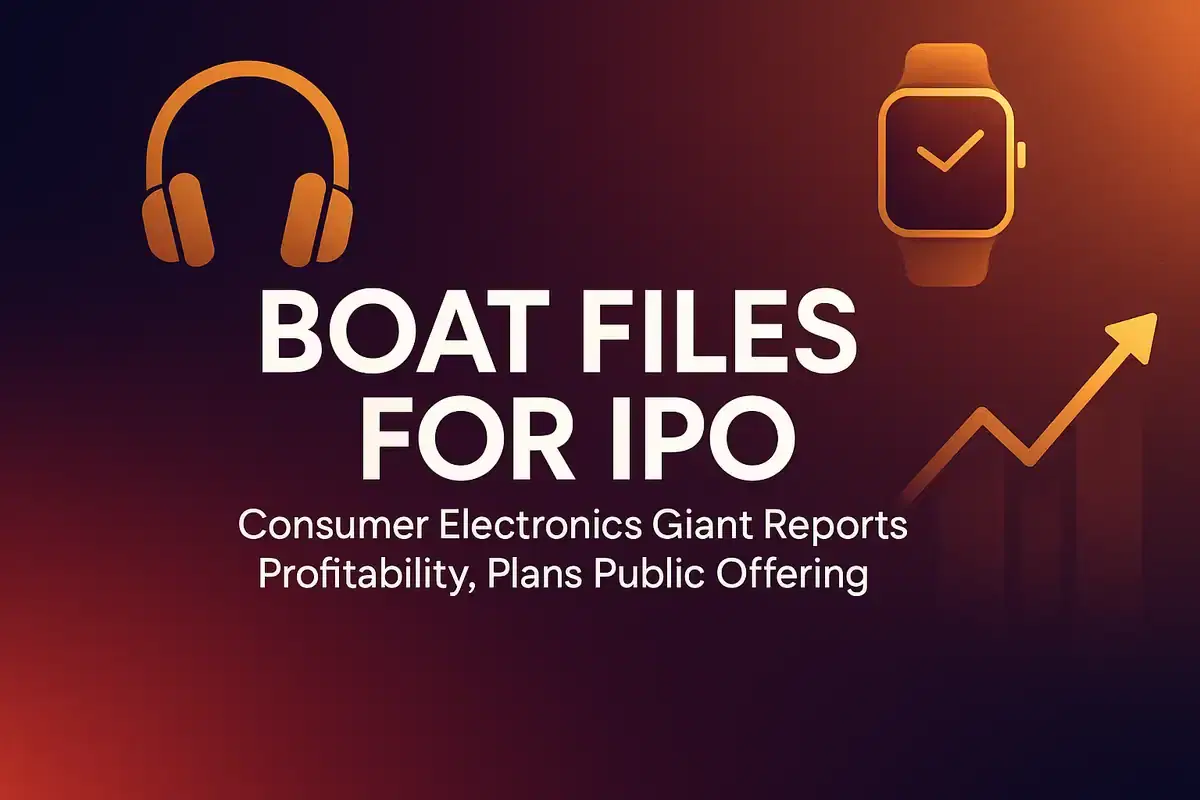boAt Reports Strong Profitability and Files for INR 1,500 Crore IPO
IPO
|
29th October 2025, 3:27 PM

▶
Short Description :
Detailed Coverage :
boAt, a prominent consumer electronics firm, has announced strong financial results for the first quarter of FY26, reporting a net profit of INR 21.4 Crore. This marks a substantial improvement from a net loss of INR 31.1 Crore in the same period last year. The company's operating revenue grew by 11% to INR 628.1 Crore, driven by sales of audio wearables, smartwatches, and power banks. Including INR 10.3 Crore in other income, total income reached INR 638.4 Crore. boAt had also returned to profitability in FY25, achieving a net profit of INR 60.4 Crore after a loss of INR 73.7 Crore in the prior fiscal year, despite its revenue remaining flat.
Crucially, boAt has filed its updated draft red herring prospectus (UDRHP) with the Securities and Exchange Board of India (SEBI) for an Initial Public Offering (IPO) worth INR 1,500 Crore. The issue will consist of a fresh issuance of shares up to INR 500 Crore and an Offer for Sale (OFS) of up to INR 1,000 Crore. The company may also conduct a pre-IPO funding round of INR 100 Crore.
Founders Aman Gupta and Sameer Mehta, along with investors like South Lake Investment, Fireside, and Qualcomm, plan to sell portions of their stakes through the OFS. boAt intends to use INR 225 Crore from the fresh proceeds for production and logistics, INR 150 Crore for promotional activities until FY28, and the remaining INR 125 Crore for general corporate purposes.
Total expenses in Q1 FY26 decreased by 1% year-on-year to INR 608.4 Crore. Spending on the purchase of stock-in-trade increased significantly by 63% to INR 576.6 Crore, though this was partially offset by inventory gains. Employee benefit expenses rose by 18% to INR 38.5 Crore, while advertising expenses were reduced by 34% to INR 53.2 Crore.
Impact: This news holds significant weight for Indian stock market investors. The profitable performance and IPO filing by boAt, a popular consumer brand, signal potential new investment opportunities and can influence investor sentiment in the consumer electronics and tech sectors. The successful IPO could boost the company's valuation and contribute to market activity. Impact rating: 8/10.
Difficult Terms: * Net Profit: The amount of profit a company has left after deducting all expenses, taxes, and interest. * Operating Revenue: The income a company generates from its primary business activities, excluding other income sources. * Draft Red Herring Prospectus (DRHP): A preliminary document filed with the securities regulator (like SEBI) that contains details about a company planning to issue shares to the public, before the final prospectus is approved. * Initial Public Offering (IPO): The process by which a private company becomes a public company by selling its shares to the general public for the first time. * Fresh Issue: When a company issues new shares to raise capital for its business operations or expansion. * Offer for Sale (OFS): When existing shareholders (like promoters or investors) sell their shares to the public, and the company itself does not receive any funds from this sale. * Pre-IPO round: A fundraising event conducted by a company shortly before its IPO, usually involving selling shares to select investors at a pre-IPO valuation. * Promoter: The person or group of people who founded the company and often retain significant control and ownership. * Stock-in-Trade: Goods that a company purchases or manufactures with the intention of selling them for profit. * Inventory: The goods that a company has on hand and is available for sale, or raw materials used to produce goods for sale. * Employee Benefit Expenses: Costs incurred by a company for its employees, including salaries, wages, bonuses, and other benefits. * Advertising Expenses: Money spent by a company on promoting its products or services to potential customers.